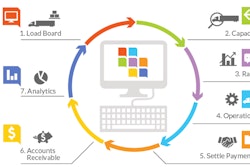
BATNA is a very familiar acronym if you are someone who is involved in a professional negotiation scenario. The best alternative to a negotiated agreement (BATNA) is a concept that Bruce Patton, Roger Fisher and William Ury introduced in their book, Getting to Yes.
Negotiators’ BATNA is the fallback alternative they pursue if the current negotiation results in an impasse. Simply, deciding your BATNA prior to negotiation can tell you the walkaway point. Failing to decide or determine your BATNA may put you at a disadvantage as you may accept an offer that you shouldn’t or you may reject an offer that you should accept.
In a negotiation, it is important to aspire, prepare and compete for the most favorable outcome, but it is just as critical to establish a walkaway point that is firmly grounded in reality. Seasoned negotiators who don’t know the term probably think through their walkaway point instinctively as they prepare for their negotiation.
How Do You Determine your BATNA?
List and evaluate your alternatives: Think about all the alternatives available to you in case the negotiation ends in an impasse. Examine each alternate, consider pros and cons, and calculate the cost involved, available time, risks and mitigation plan for pursuing each alternate.
List and evaluate your interests: List your short- and long-term interests, rank them in order, and ensure that you have a mandate from your team and superiors to explore options for mutual gains, or make the necessary tradeoff for a mutual benefit.
Establish your BATNA: From your alternatives and options, choose a course of action that can yield the highest value for you. That is your BATNA, the path you can pursue if this negotiation fails.
Assess the other side’s BATNA and their interests: It is imperative that you spend as much time assessing your BATNA as you do thinking through the other side’s BATNA and interests. Understanding that you can’t assess the other side’s BATNA as well as you could assess your own, you should ask yourself, “What will they do without my deal?” This provides valuable insight. Getting to know their interests, outside options, needs and wants can help you to formulate and propose a package that they either accept or that may increase their interest.
In addition, a thorough understanding of their interests and options can help you to determine your tradeoffs, and enable you to increase your slice of the pie.
Accept or walk away: After evaluating your alternatives, interests and BATNA, calculate and finalize your reservation value, the lowest value deal that you are willing to accept. If the value of the deal proposed to you is lower than your reservation value, you are better off rejecting the offer and pursuing your BATNA. If the final offer is higher than your reservation value, happily accept it.
What if I Don’t Have a BATNA and the Other Side Knows It?
You should always have a BATNA, but your BATNA may be an unacceptable outcome for you or your organization. Understandably, the immediate step if you are in this situation is to try to pursue alternate options or invest in developing the alternates for long-term benefits.
Look for ways to move beyond the current scope or increase the slice of the pie. Even though the other side knows that your BATNA is weak, you can get their attention by increasing the share as they could potentially get a bigger portion of the pie.
Create uncertainty and make them think that your BATNA is not as weak as they think.
Appeal to the other side’s sense of fairness.
We are in the food industry and consume a reasonable amount of gelatins, an ingredient in a couple of our top-selling products. We were facing a tight situation when the pork and beef gelatin prices were rising and nearly threefold as compared to two years prior. There were handful of Food & Drug Administration (FDA)-approved vendors and we dealt with a couple of gelatin manufacturers.
We did the external market analysis and clearly showed the spike in demand due to the increasing consumption pattern of meats, as well as leather goods in the Asia-Pacific, while the supply (number of cattle and hogs) remained pretty steady. Our manufacturers in the Americas have to pay a premium to secure rawhide for processing to gelatin and they were passing the increase in price to their customers (us).
We tried forming a consortium of gelatin manufacturers to secure raw material at a competitive price and that didn’t work well given the Asia-Pacific manufacturers were willing to pay a premium. In due course, we involved our product innovation team to explore alternatives for gelatin and, indeed, they came up with one strong alternative ingredient that could decrease the use of gelatins in the food manufacturing industry as a whole. Although it may take several months to develop and get approval to use the alternative ingredient, the mere possibility and our determination to pursue that option created a lot of uncertainty in the minds of the gelatin manufacturers.
In our next discussion, we addressed the market scenario and discussed the long-term relationship we had between the companies and appealed for their support. Manufacturers responded with reasonable efforts to share the increase in raw material costs, pass on the efficiency improvement benefits among others and offered a little relief to the gelatin price increase.




















